Your cart is currently empty!
Project Type: Sabbats
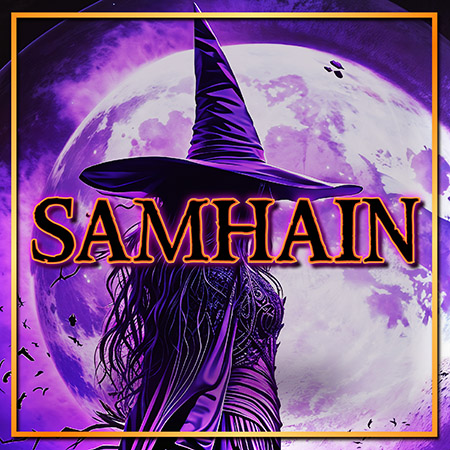
Samhain
October 31st

Samhain (pronounced sow-en) is no doubt the most important, though least understood, of the ancient Celtic festivals. Unlike its modern counterparts of Halloween or All Hallows’ Eve, The Witch holiday of Samhain has nothing to do with evil practices or horrific, ghoulish costumes.
Samhain is a holiday infused with positive energy with hope for our planet’s future. On every Samhain Eve, the Morrighan, one of the triplicities of Celtic Goddesses, celebrates her union with the Dagda, the “good God.” The Morrighan’s role on this night is to reaffirm life in the face of Winter’s impending hardships and struggles. On Samhain night, we wear costumes to “project” what we wish to manifest for ourselves in the coming year. Samhain is a mystical and enchanted night when the veil is at its thinnest between the worlds. A time when we may converse once more with our loved ones who have passed on, and when majick can be done to benefit our personal lives as well as our planet. It is also the Witches’ New Year!
The next Sabbot on the Wheel of the Year is Yule
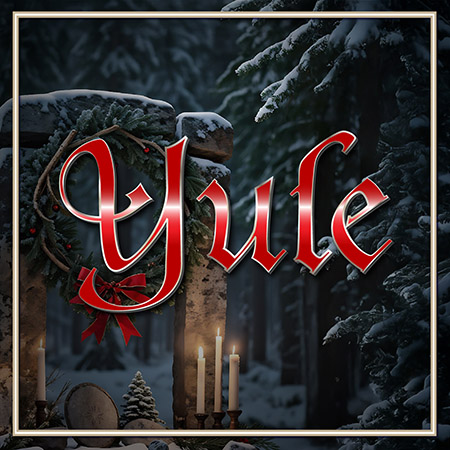
Yule
December 21st (Winter Solstice)

The Winter Solstice marks the longest night and the shortest day of the year, a point of dramatic natural change on Earth. From this point on, the Sun rises earlier and earlier, each time adding a little more light and warmth to the cold and silent days of Winter. On Yule, we honor the Goddess, Mother Earth, for giving birth to the Sun once more. At Yule, the two God themes of death and rebirth coincide. The Holly King, the retainer of light who has symbolized death and darkness since Samhain, is vanquished by the rebirth of the Oak King, who symbolizes Life. The Holly and the Oak are two of the many trees sacred to the Celts, and even evergreens are often brought inside to reaffirm life during the dark Winter, sometimes decorated with apples, symbolizing Avalon and the Sun. The beauty of Yule is that it recognizes the interconnected nature of all existence.

Imbolc
February 1st

There is a youngness and Springtime glory about the festival of Imbolc, which at first appears to be out of step with February’s stark and bitter Winter face. We are reminded that during this time of year that the icy frost lies just beyond the door, so we make ourselves content with hearth, home, and the familiar. At Imbolc, Witches honor the triple Celtic Goddess Brid/Brigid/Bridget, in her maiden aspect. She is the Protector and Preserver of ALL Memory and Knowledge. She empowers her students with the wisdom to nurture the land, keeping it safe and productive and for the good of All. Brid may be a maiden at Imbolc, but she is pregnant with the young seed from the Sun, and thus is a Goddess of Fire and Fertility. Brid wears a crown of candles on this festival of Light. Until her light is fully born at Beltane, the seed of Spring is nurtured in her womb, and the home fires continue to burn through the final days and nights of Winter.
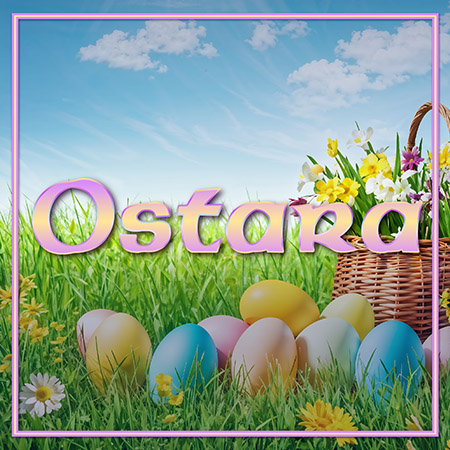
Ostara
March 21st (Spring Equinox)

Ostara/The Spring Equinox represents the dramatic point of each year when the days are of equal length everywhere on the planet. The seasons, planetary movements, and tides triumphantly renew themselves, and for Witches, create an enchanted borderland time outside of time where a magical seam joins the light and the dark. This subtle change from dark to light is subtle, yet profound, and sends the exquisite message to all here on Earth that Springtime is the season of rebirth. The Maiden Goddess becomes the Mother once more, giving birth to the power of the Sun. The icy snow melts, giving way to green petals. Ostara is the Goddess of fertility and rebirth, standing amid the flowers and vines of Spring holding an egg in her hand. Birds fly overhead, and rabbits hop playfully at her feet. Ostara and the egg she carries are symbols of newborn life. In our rituals, we also honor the Celtic flower maidens like the Welsh Bloudeuwedd, as well as the Arthurian Guinevere. Great swaths of white clover represent her paths, leading us to higher explorations of ourselves and inner wisdom.
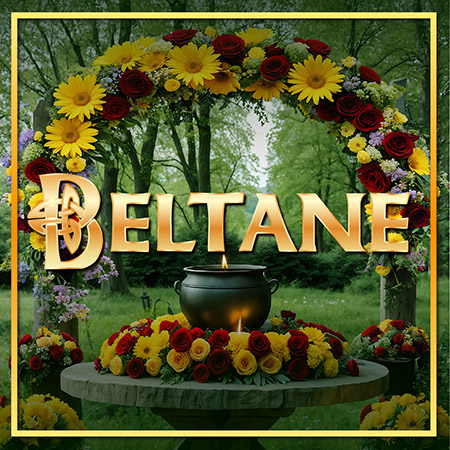
Beltane
May 1st

The word Beltane simply means “Fire of Bel.” Bel is the bright and shining one. In modern Irish, Beltane means May. On the eve of May 1st, the ancient Celts built bonfires using nine of the sacred woods and would ritually drive their animal herds between them to purify and protect them from disease and harm. On Beltane, Witches celebrate the great fruitfulness of the Earth. We light our Beltane fires symbolically in a cauldron from the nine sacred woods, and if possible and (space permitting), will safely burn a bonfire as more in keeping the tradition. We celebrate the union of the Great Mother and the young Horned God. Their coupling brings fresh new life on Earth, which we experience in the exuberance of Spring. Love is in the air, and handfastings are common. Dancing and frolicking about the maypole have become the norm at Beltane gatherings, as we weave our futures with one another and while wearing crowns of flowers.
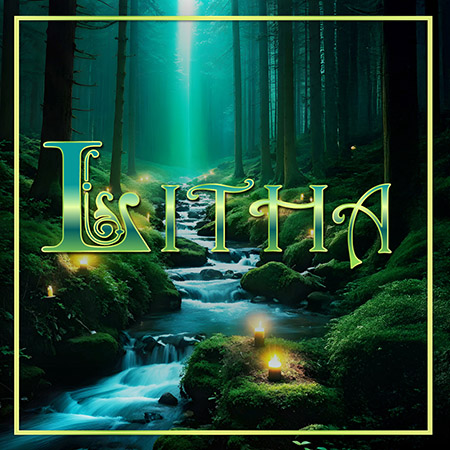
Litha
June 21st (Summer Solstice)

The Sun at Midsummer reaches that moment in His journey across the sky when his power peaks, then in one majickal instant, begins to wane. As we have seen at the Winter Solstice, the Oak King, God of the Waxing Year, vanquishes the Holly King, the god of the Waning Year. At midsummer, the reverse is true, with the Holly King wresting the baton from his rival twin. Midsummer is the time of year when the Young God retreats to the ever-turning wheel of the stars, the realm of the goddess Arianrhod. There he must wait and learn before being reborn again at the Winter Solstice. This holiday shares the same carefree, frolicking qualities of Beltane, and brings into balance the activities of the Faerie world with our own. Flowers and herbs are in full bloom at Litha and are essential to Midsummer rites. We often call upon the Faerie Queen and the Flower Goddess Vivian. It is Vivian who gives the sword Excalibur to King Arthur. That tradition continues with our Cabot Clergy to this very day, as we ceremonially wield Excalibur swords to proclaim our self-Sovereignty.
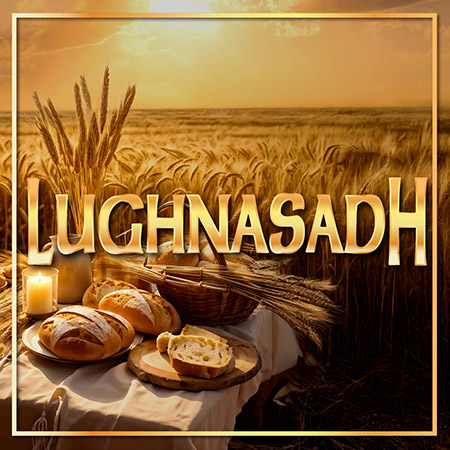
Lughnasadh
August 1st

The Irish God Lugh is known as the “Bright and Shining One.” He is associated with both the Sun and agricultural fertility. He is also a God of All Skills and champion of the Tuatha de Danaan or “children of the Goddess Dana.” Lughnasadh (pronounced loo-na-sa) marks the beginning of the grain harvest, the first harvest of the Wheel of the Year. The importance of grain to life is evident in virtually every deity structure in every religion on Earth. The entire preparation of grain from seed to harvest parallels life-in-death and death-in-life aspects of the Great Goddess, Mother Earth. By Lughnasadh, the Sun God has already begun his downward journey, facing now towards the dark frosts of Winter. The Goddess, by contrast, wears a face of exquisite abundance. We reap the bounteous benefits of fresh fruits, vegetables, and herbs. Lughnasadh is a time when the symbolic aspects of the life-sustaining elements of grain spill over into every part of life.

Mabon
September 22nd (Autumn Equionox)

Mabon marks the 2nd of the three harvest celebrations of the Wheel of the Year. At the same time, we begin to mourn the shortening of our days and the gradual disappearance of the Sun above the equator. We remember the proto-Celtic story of Mabon. At the Equinox, the Sun’s strength diminishes, until the Winter Solstice when the Sun grows stronger and the days once more become longer than the nights. Mabon also disappears at this time, and although his whereabouts are a mystery, he is eventually aided back by the memory and wisdom of the Black Bird, the Owl, the Eagle, and the Salmon, our most ancient Celtic archetypes. Mabon has been dwelling in the Otherworld of his mother, Modron, facing challenges, gathering strength and wisdom to be reborn as his mother’s champion, the source of joy Son of light. At Mabon, we are invited to explore the world of archetypes, beyond the boundaries of conventional travel, to the realms of the Gods and Goddesses, and the presence of truth outside of time.